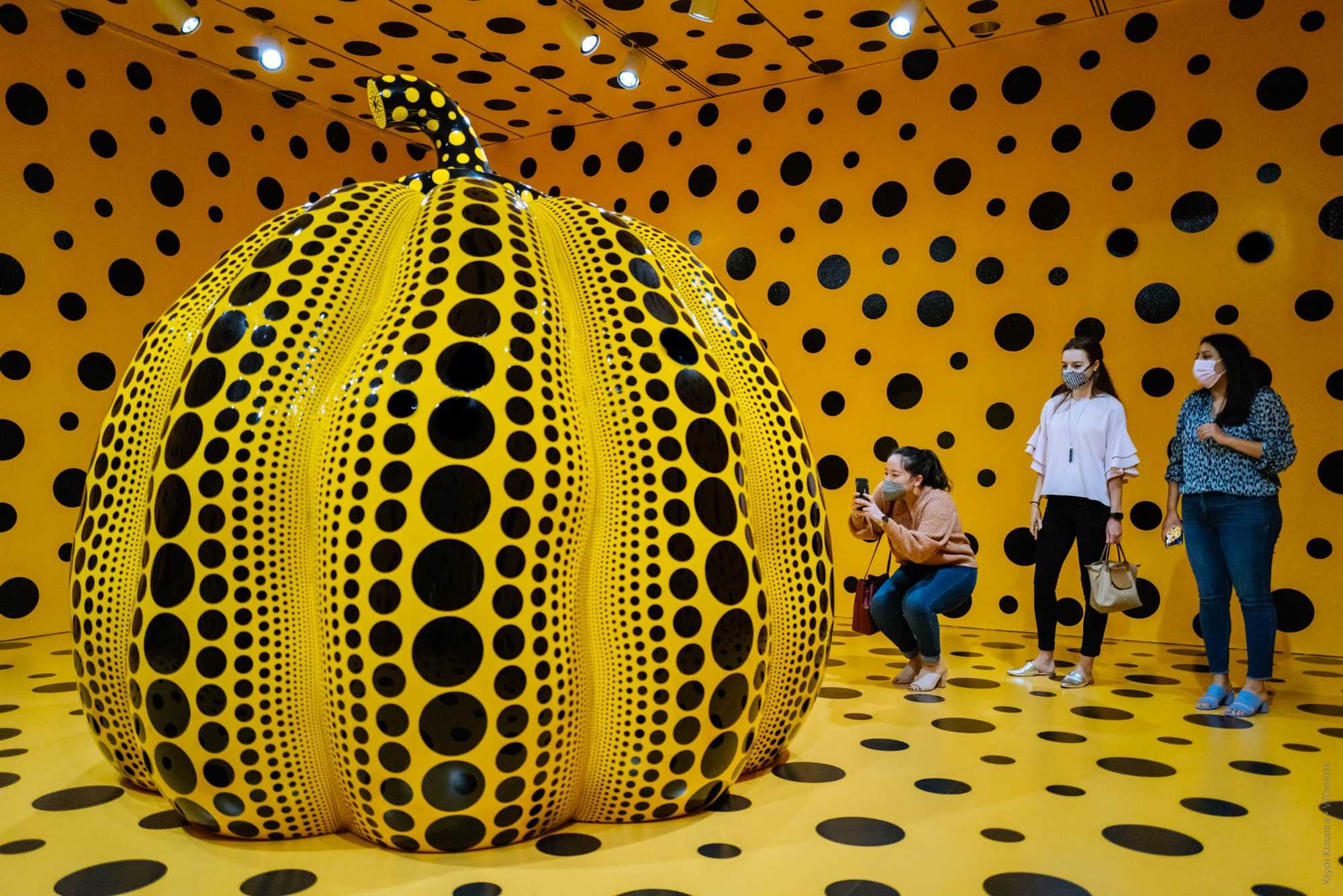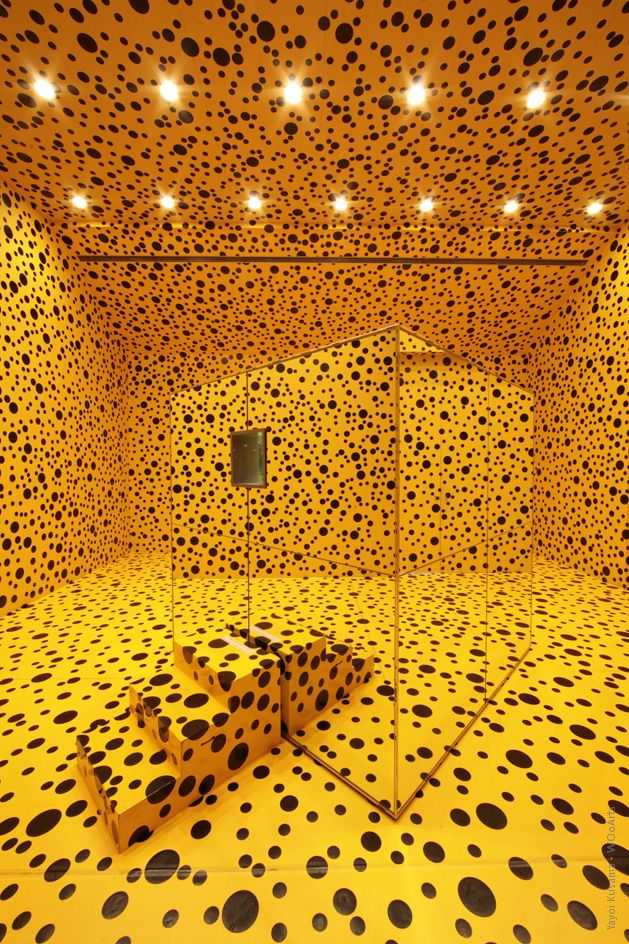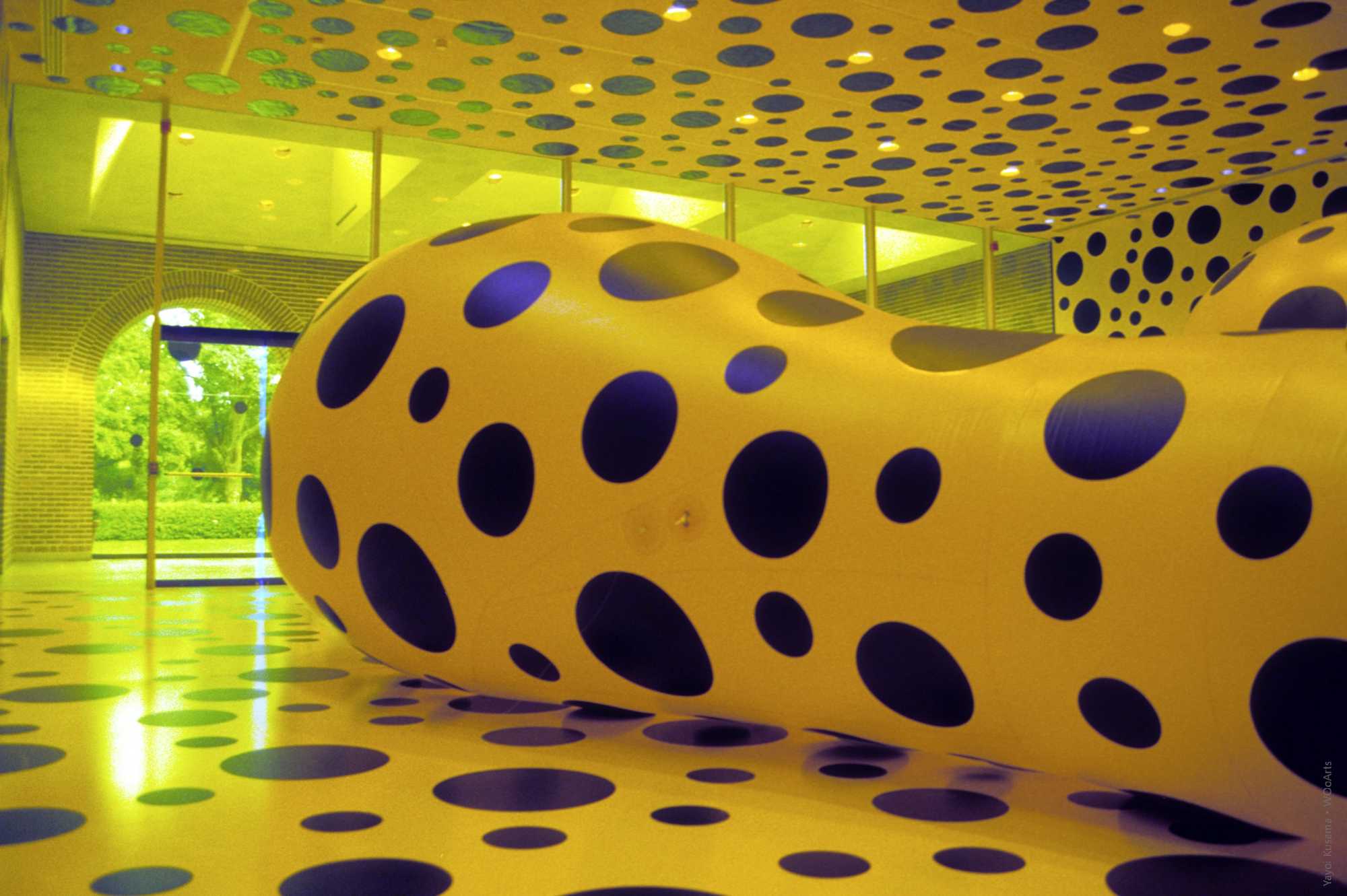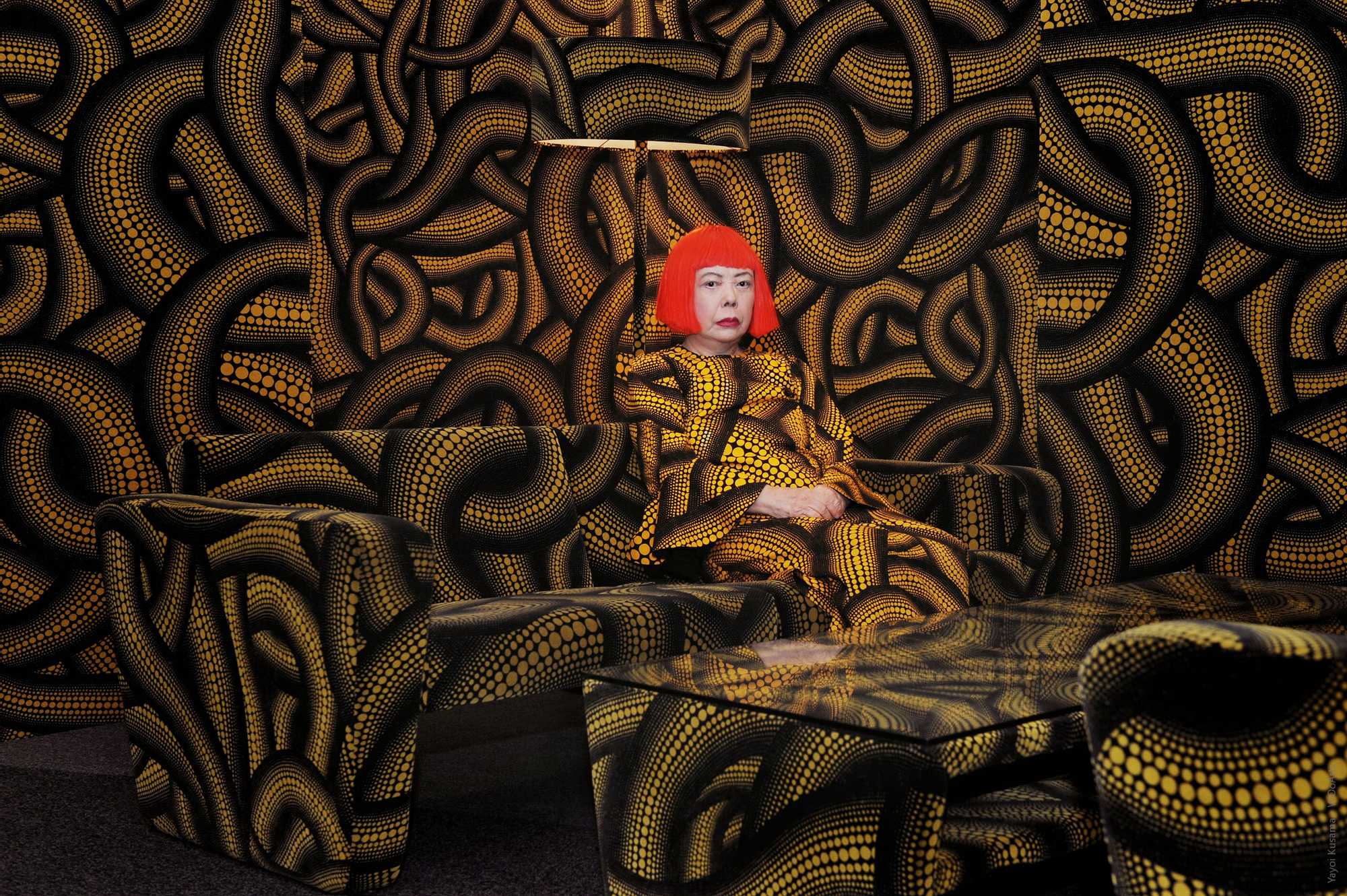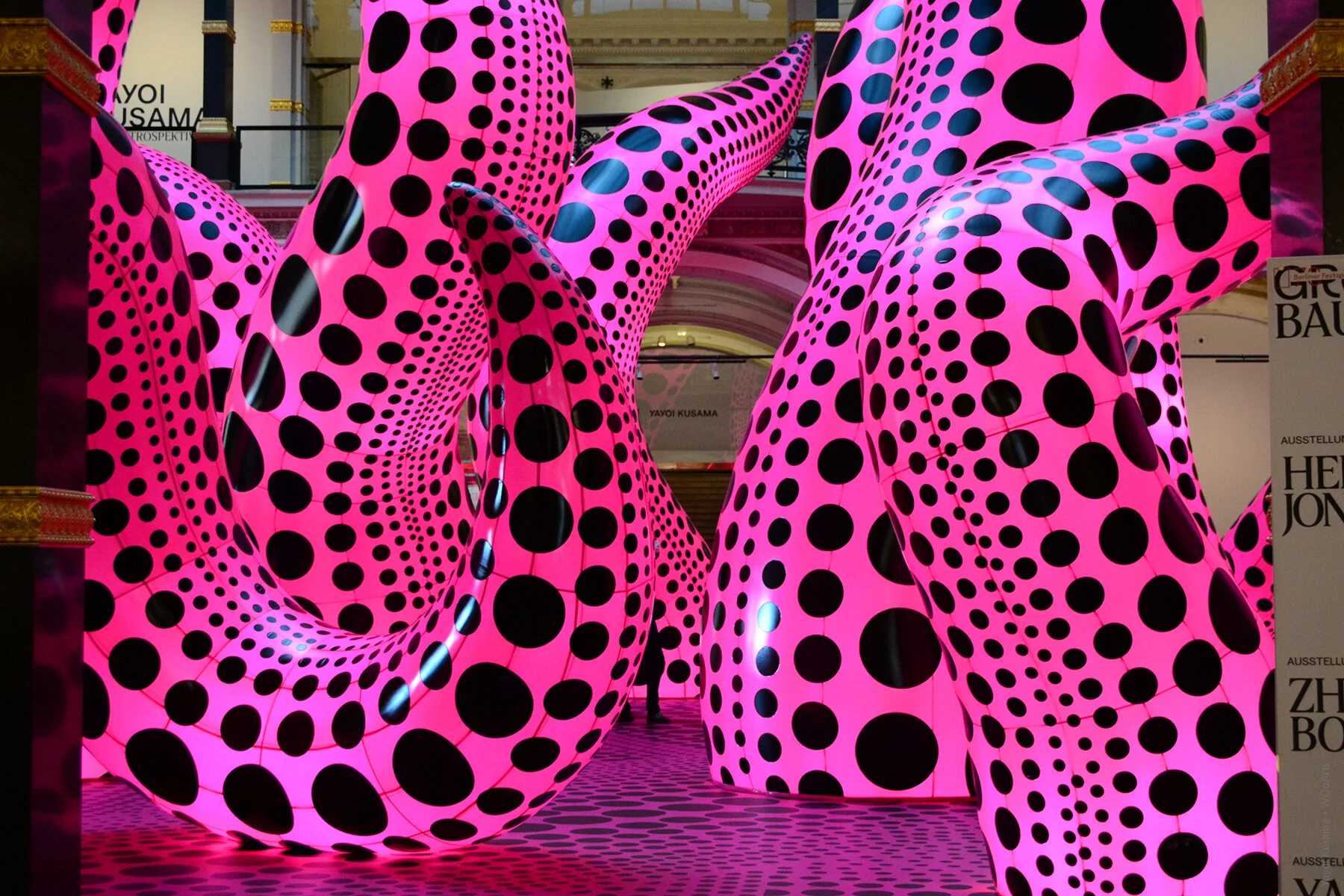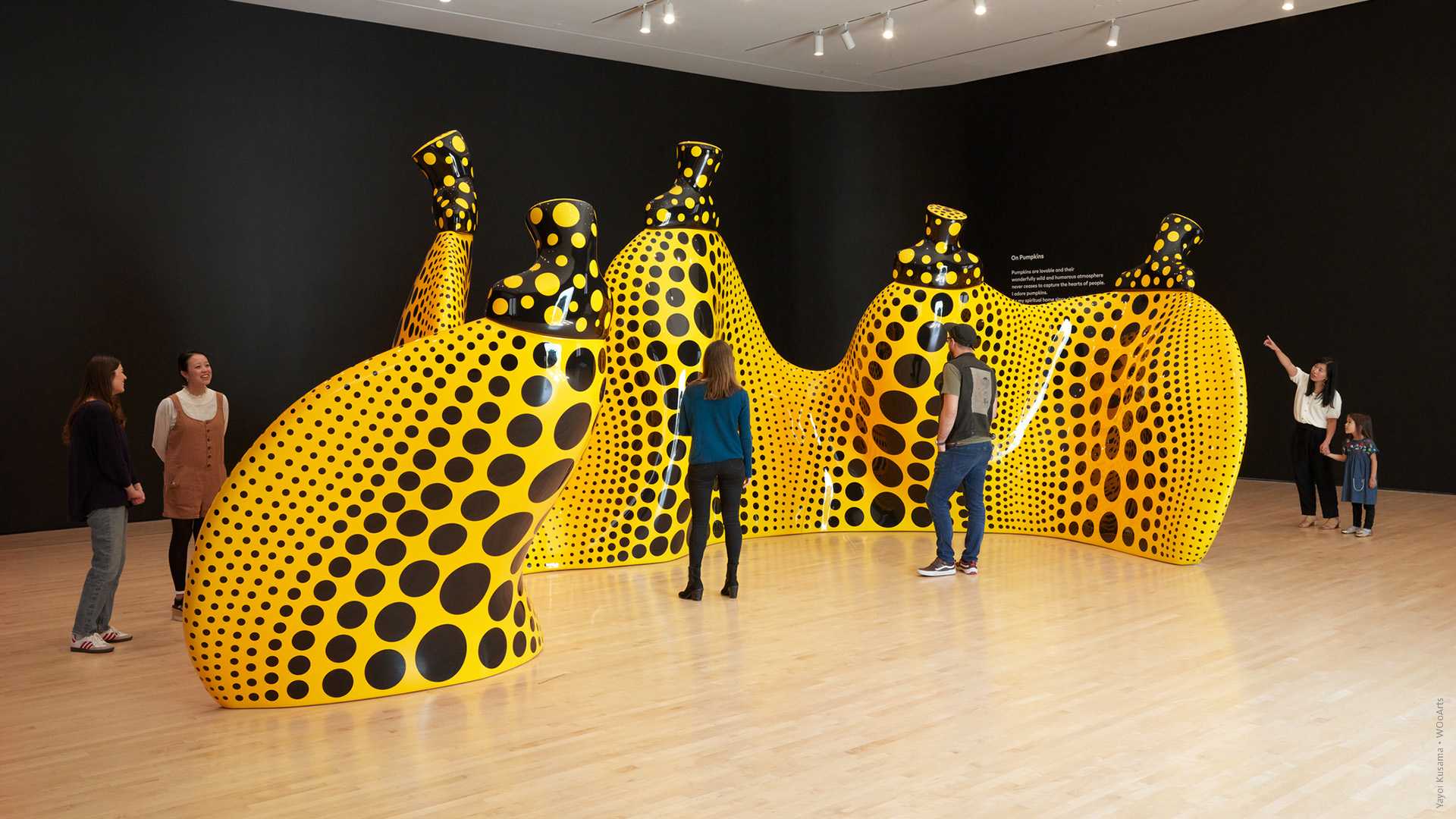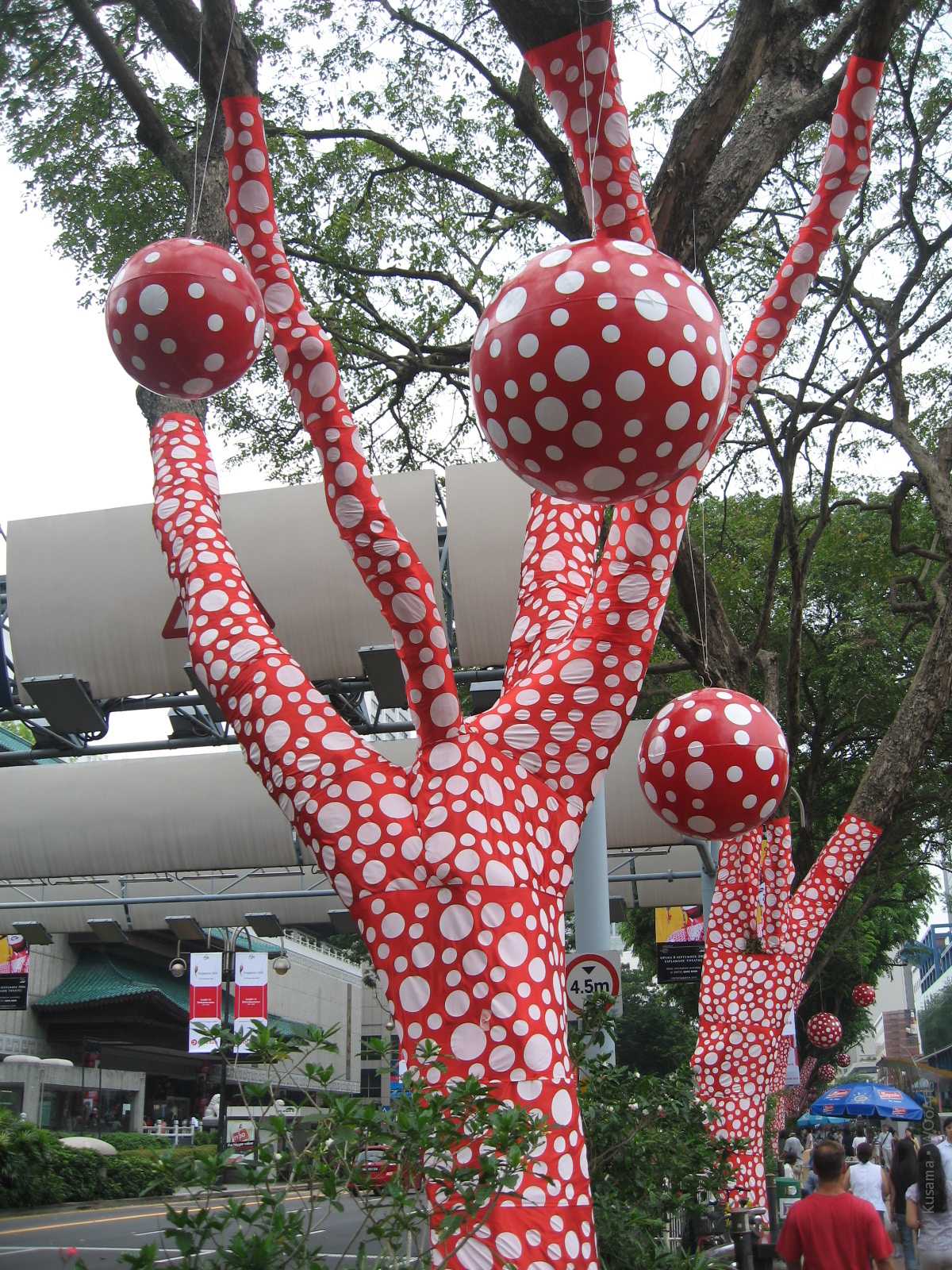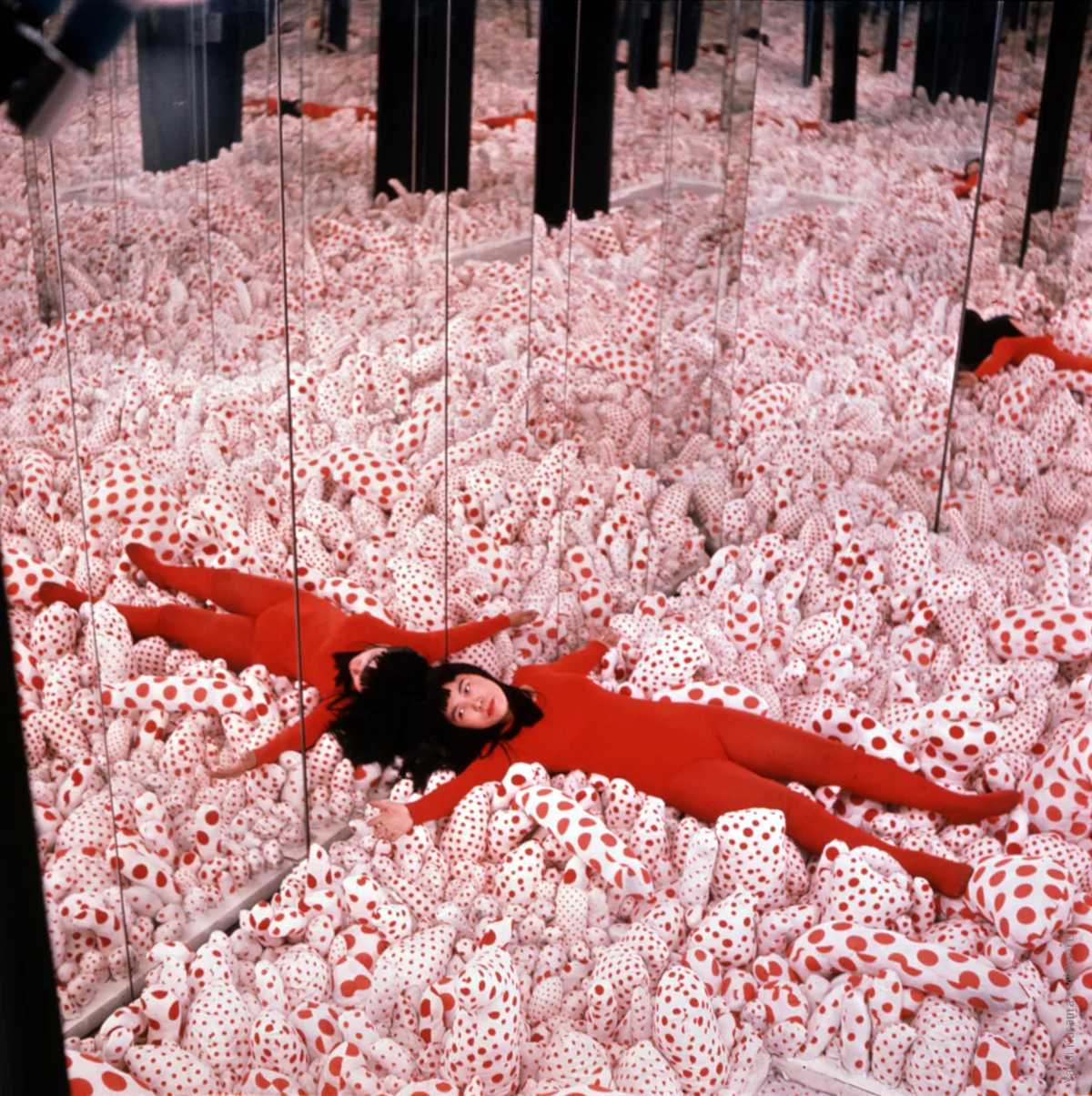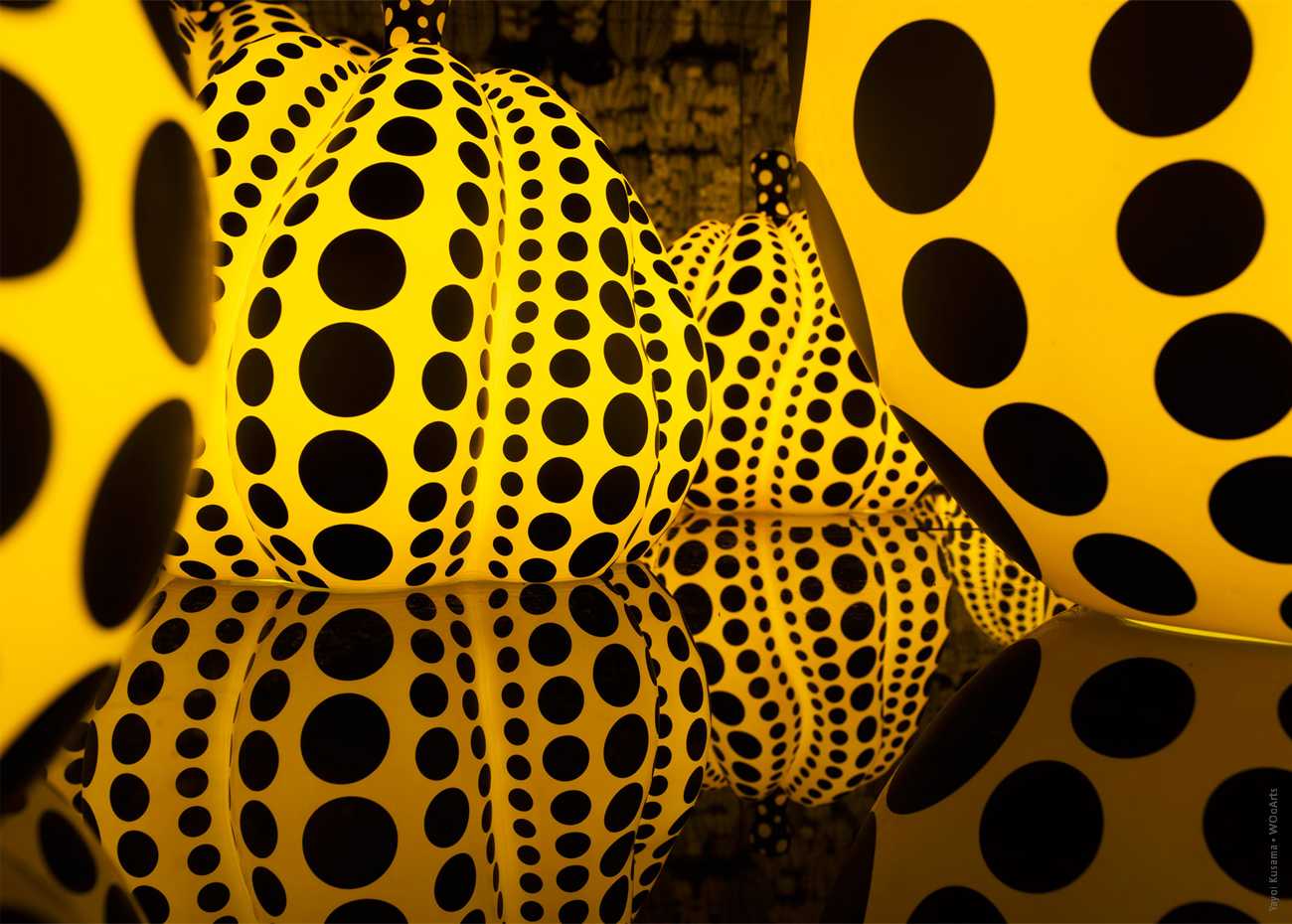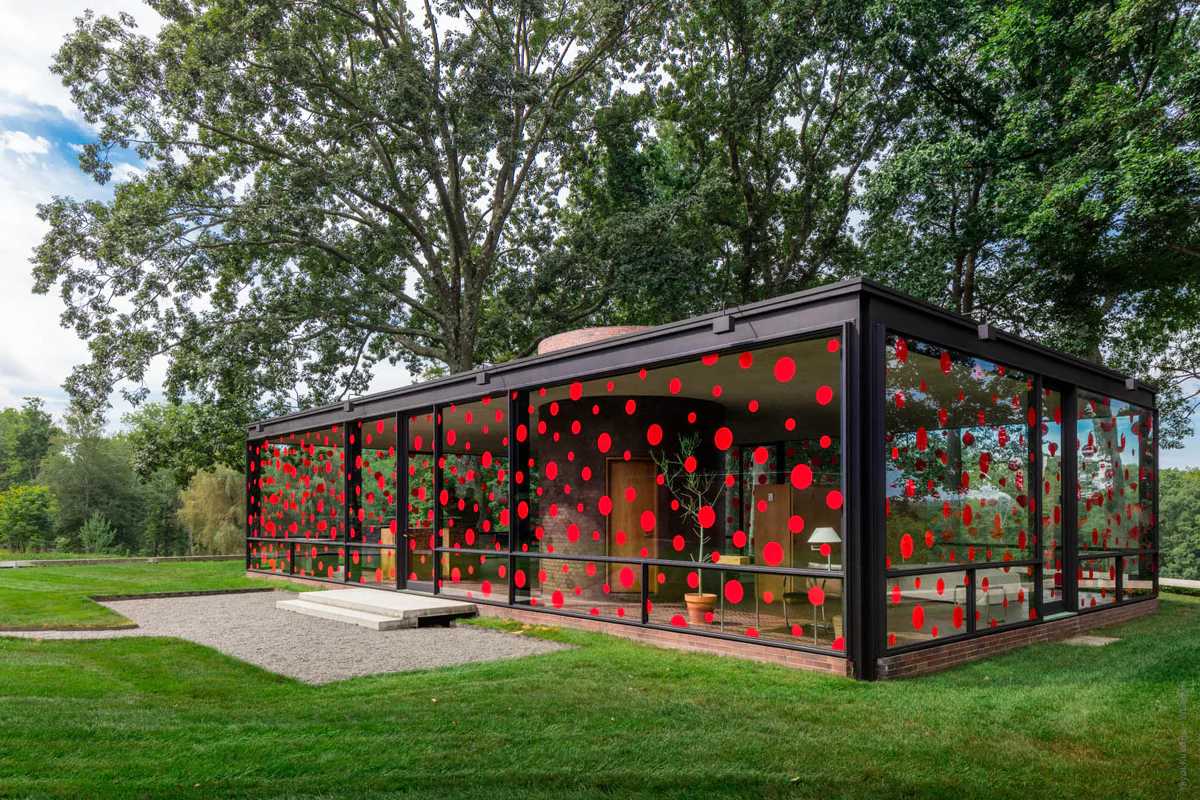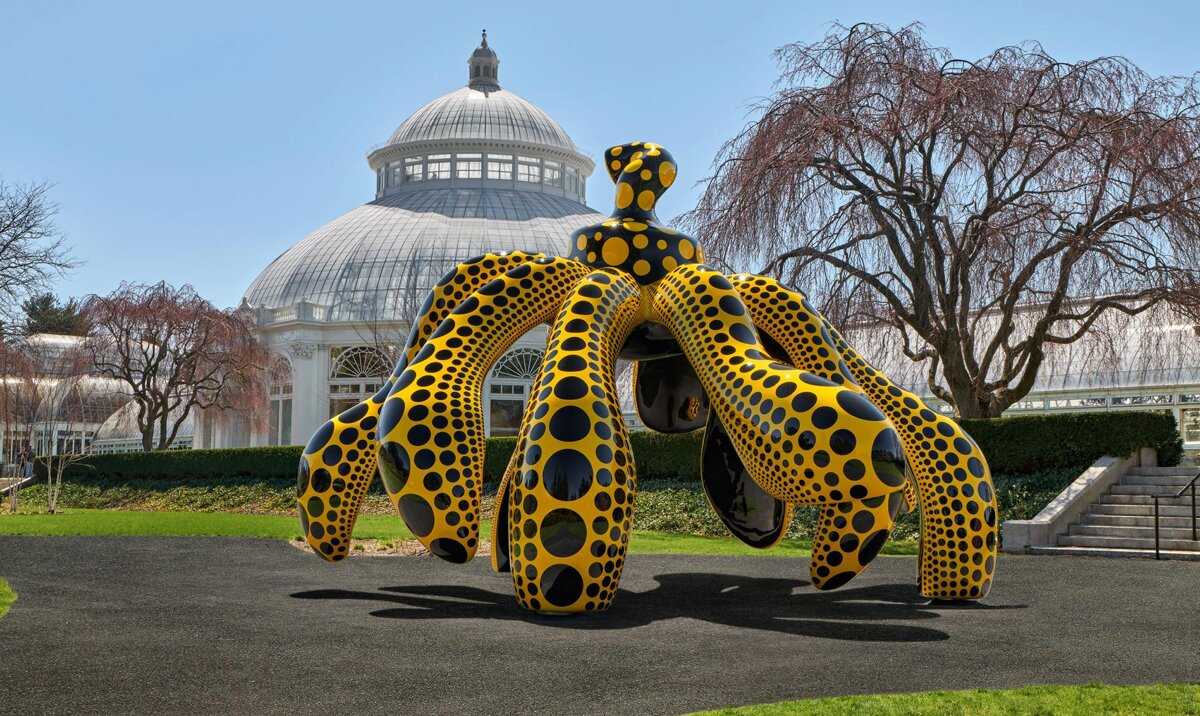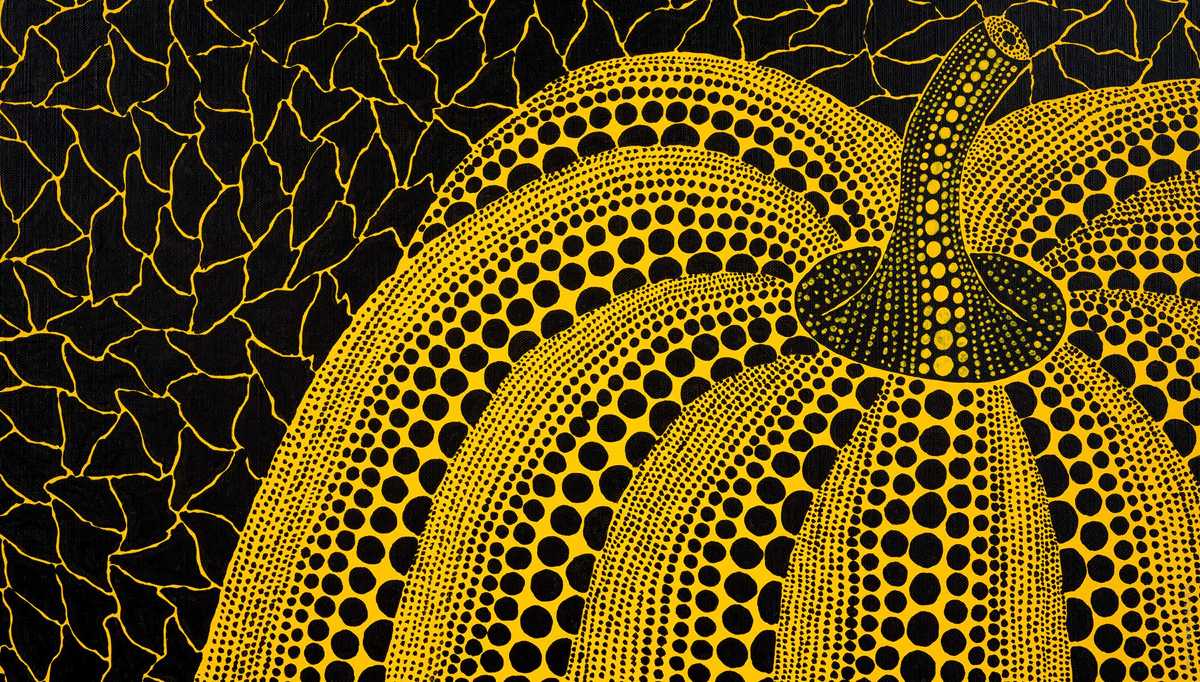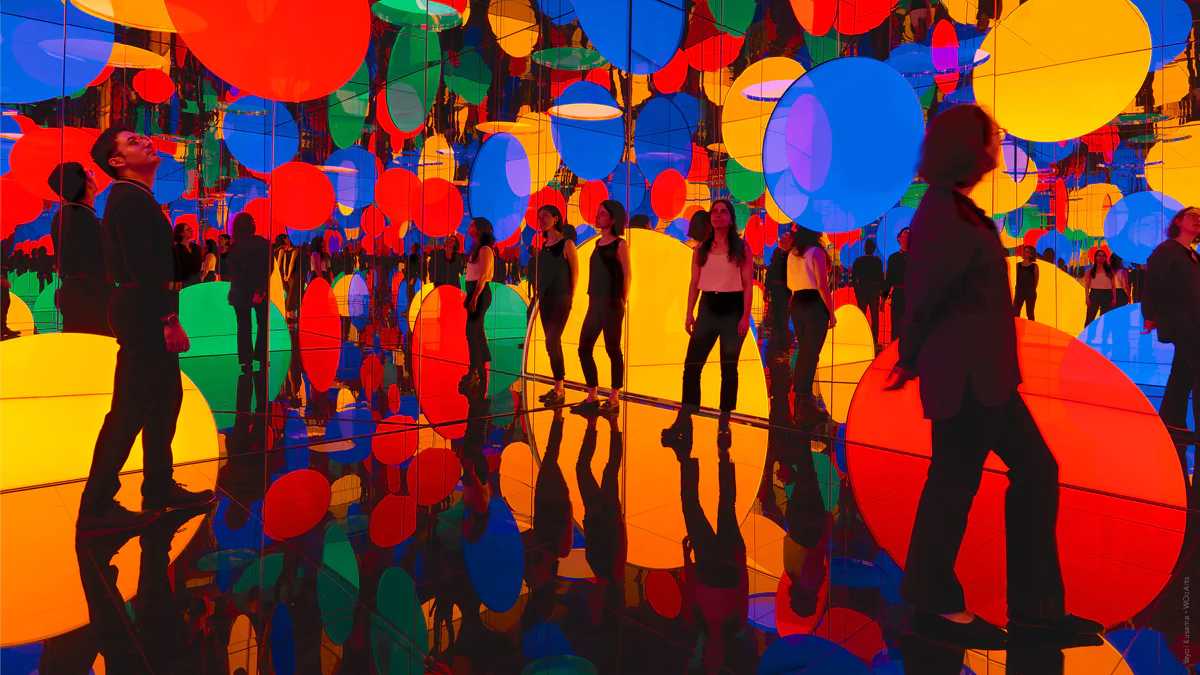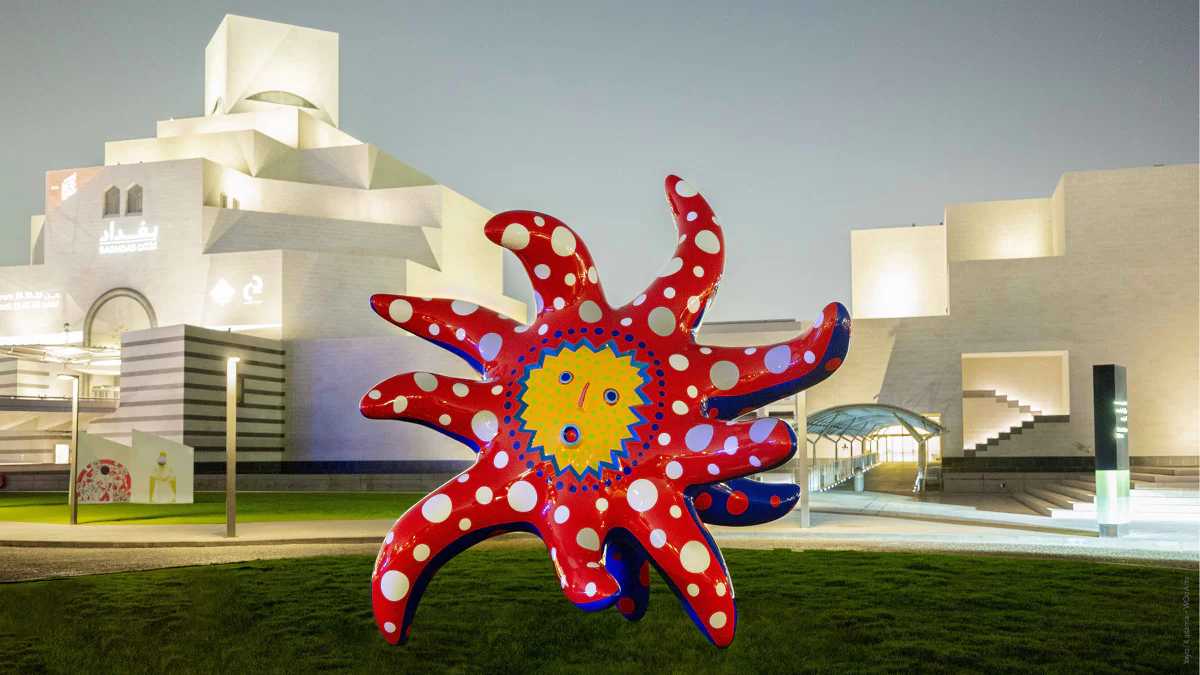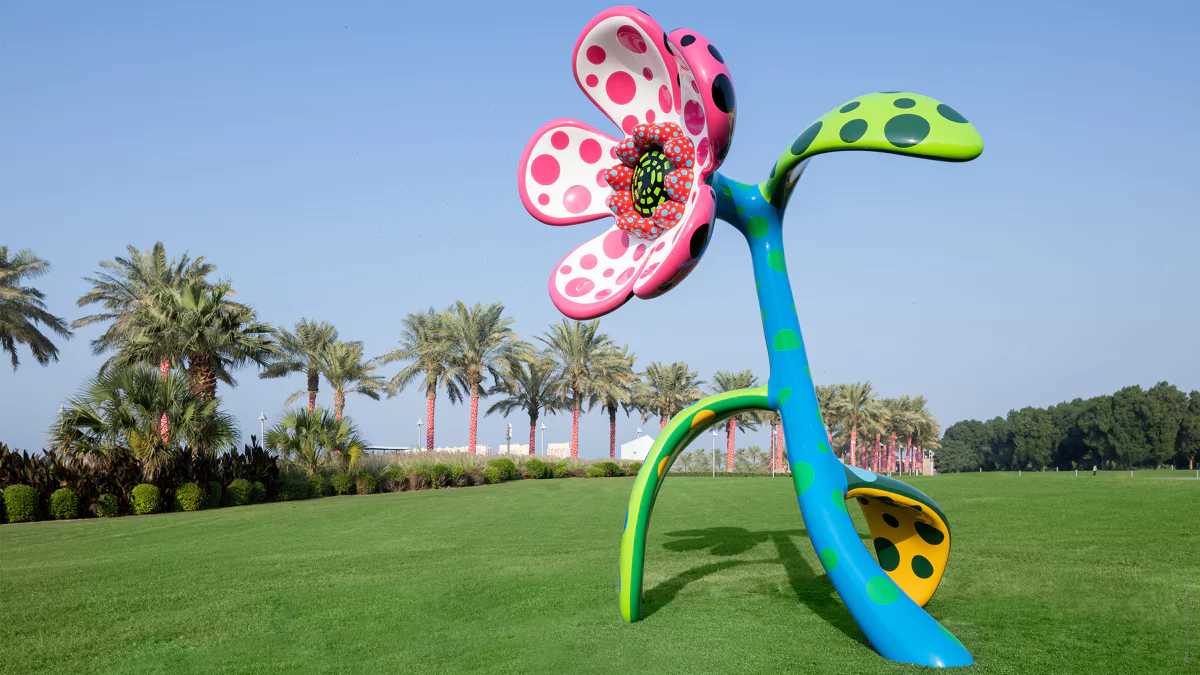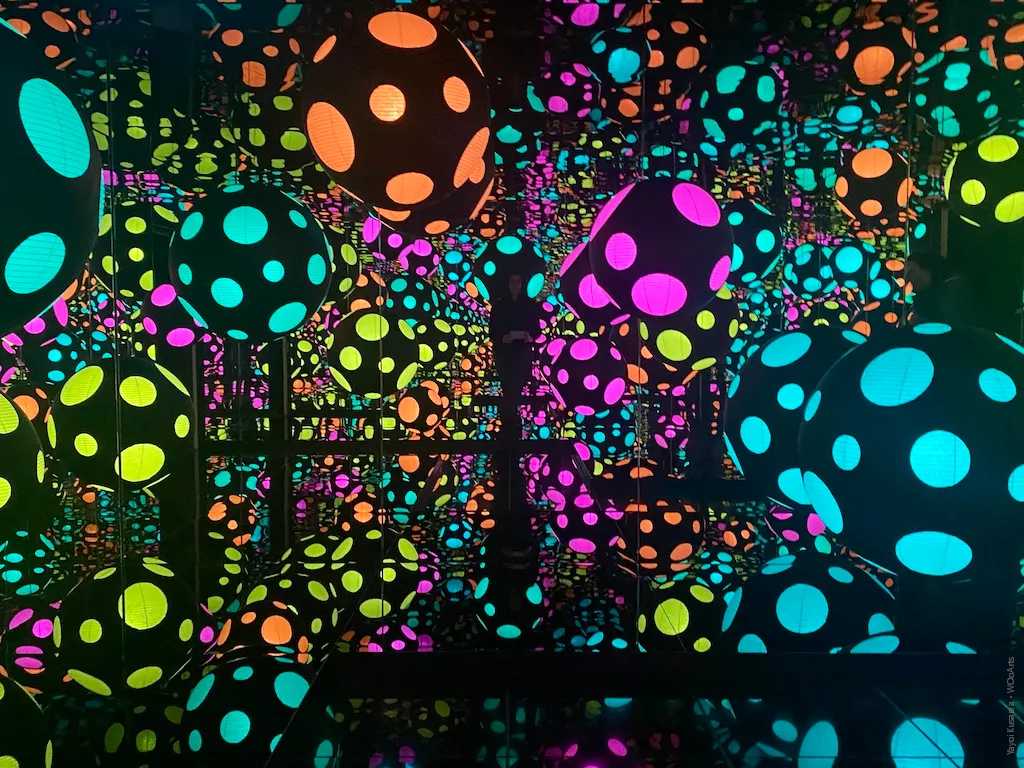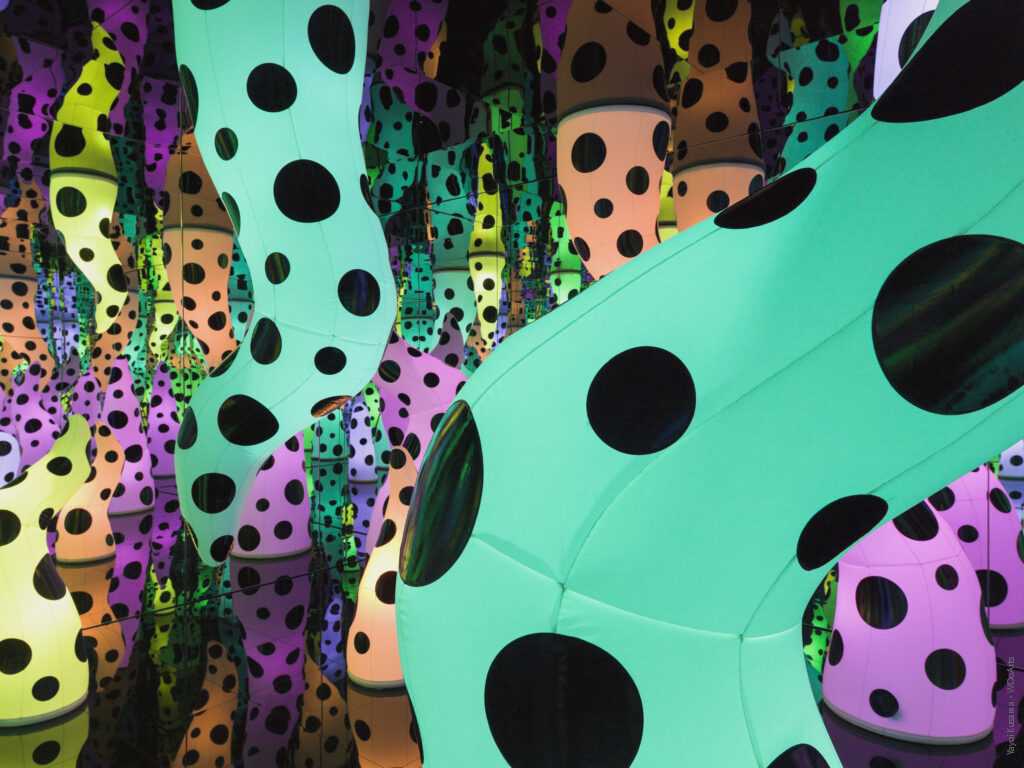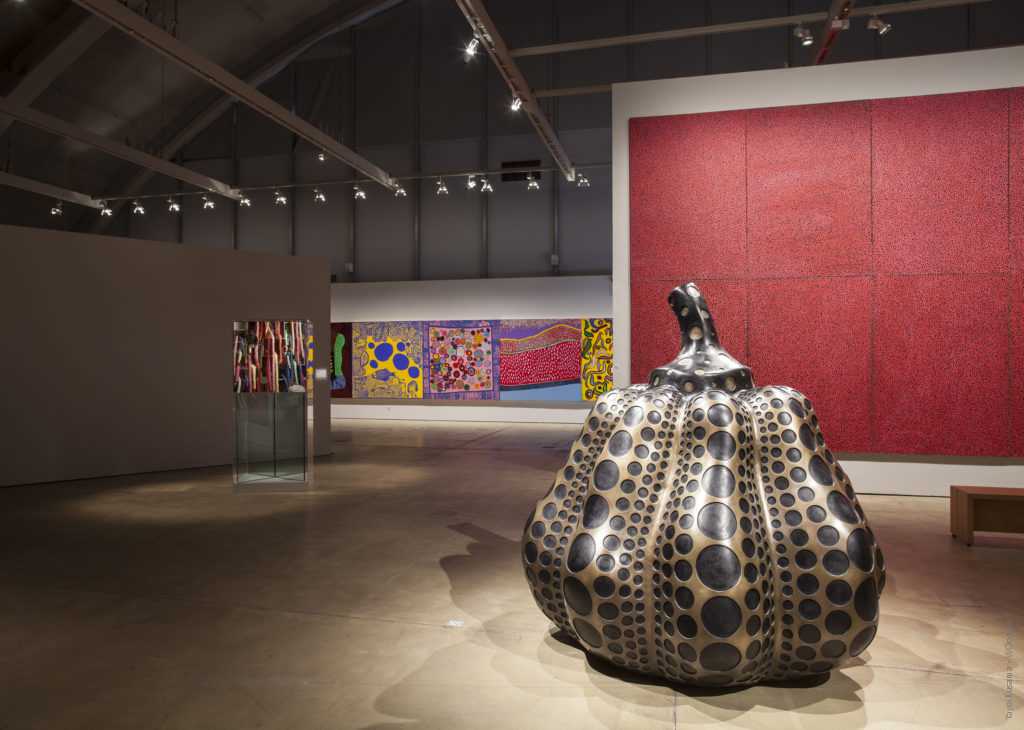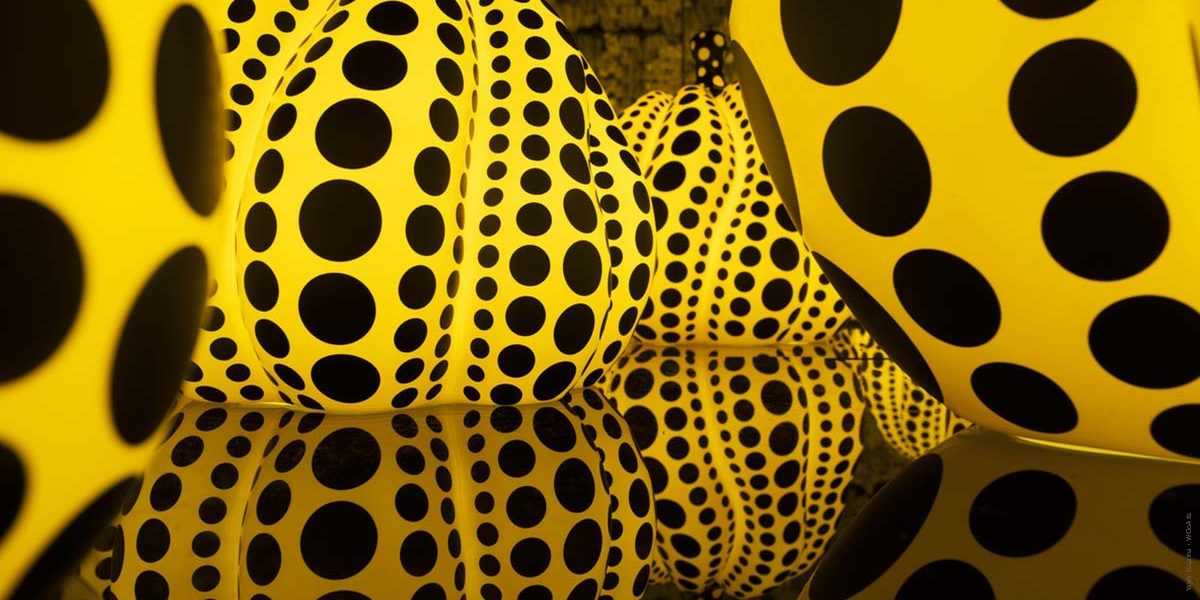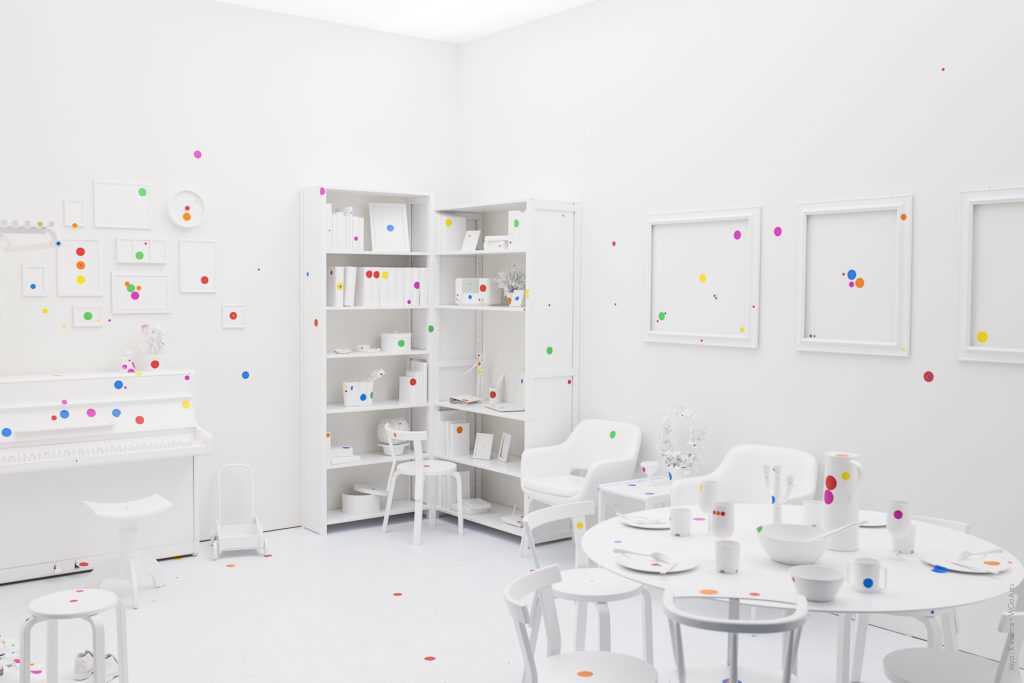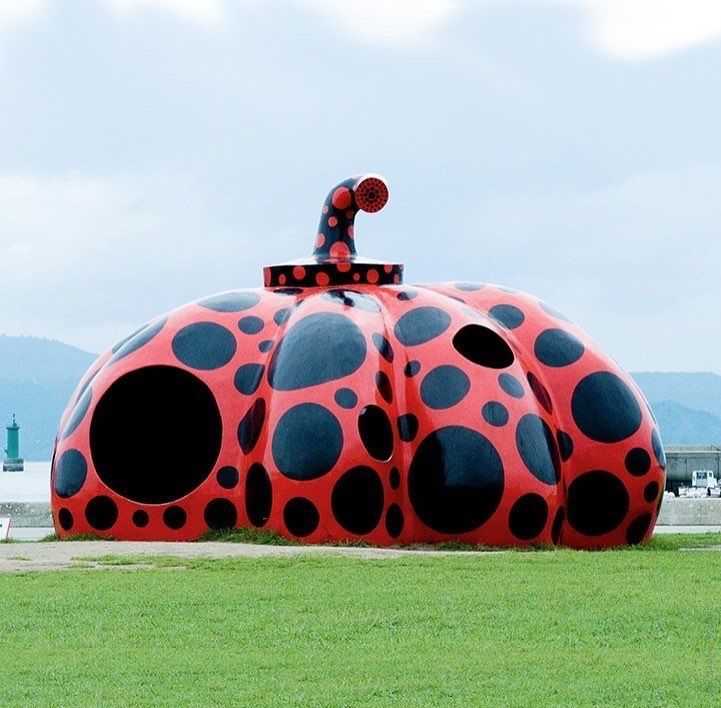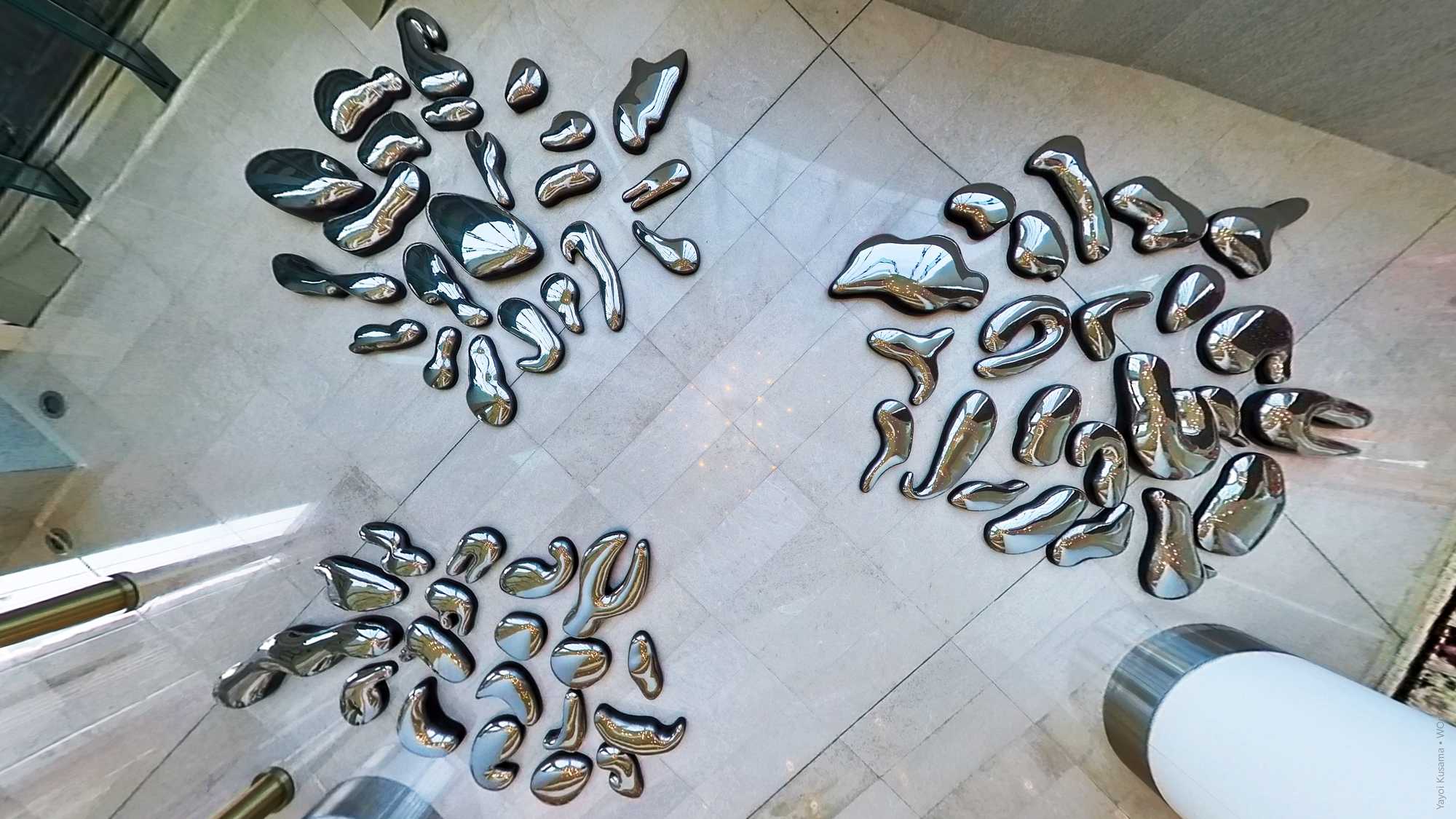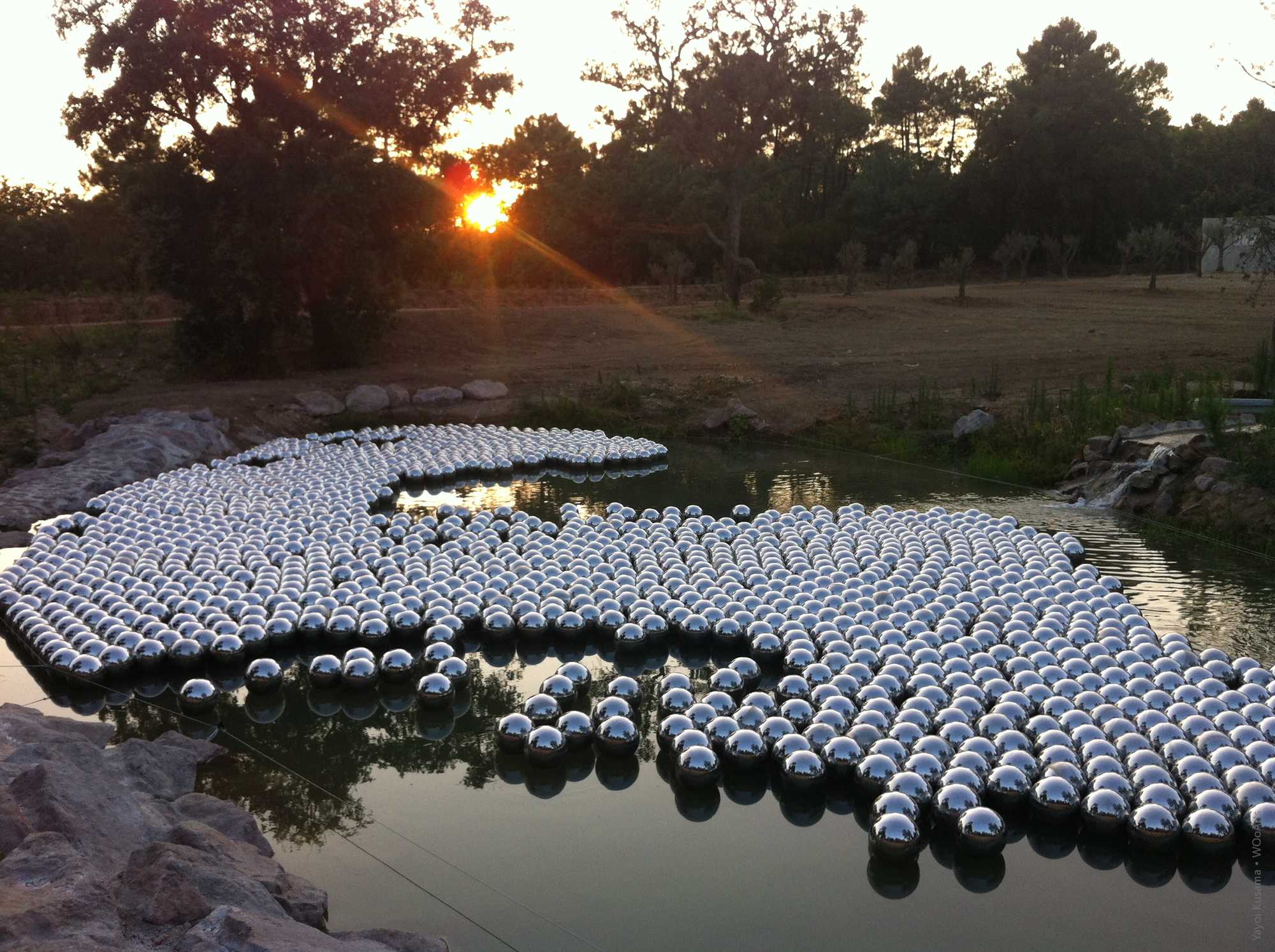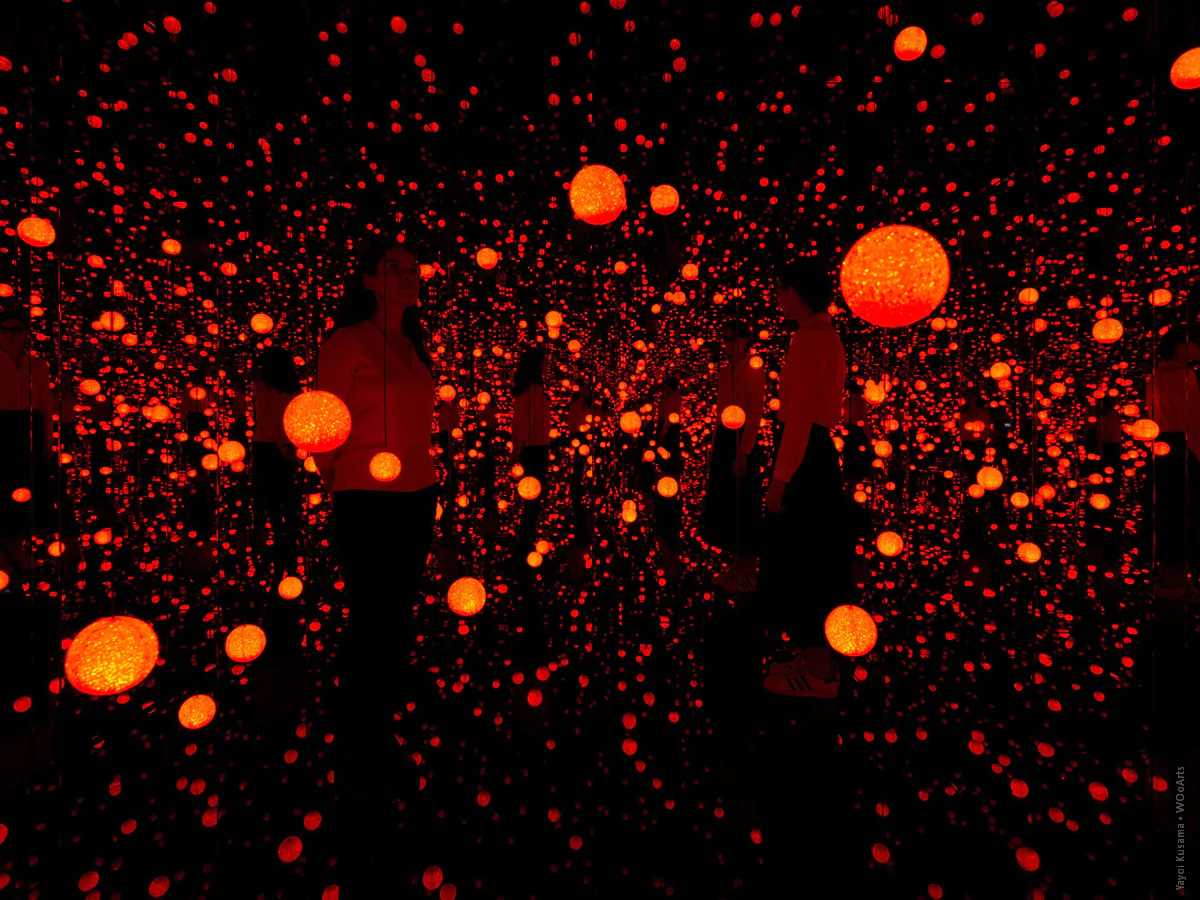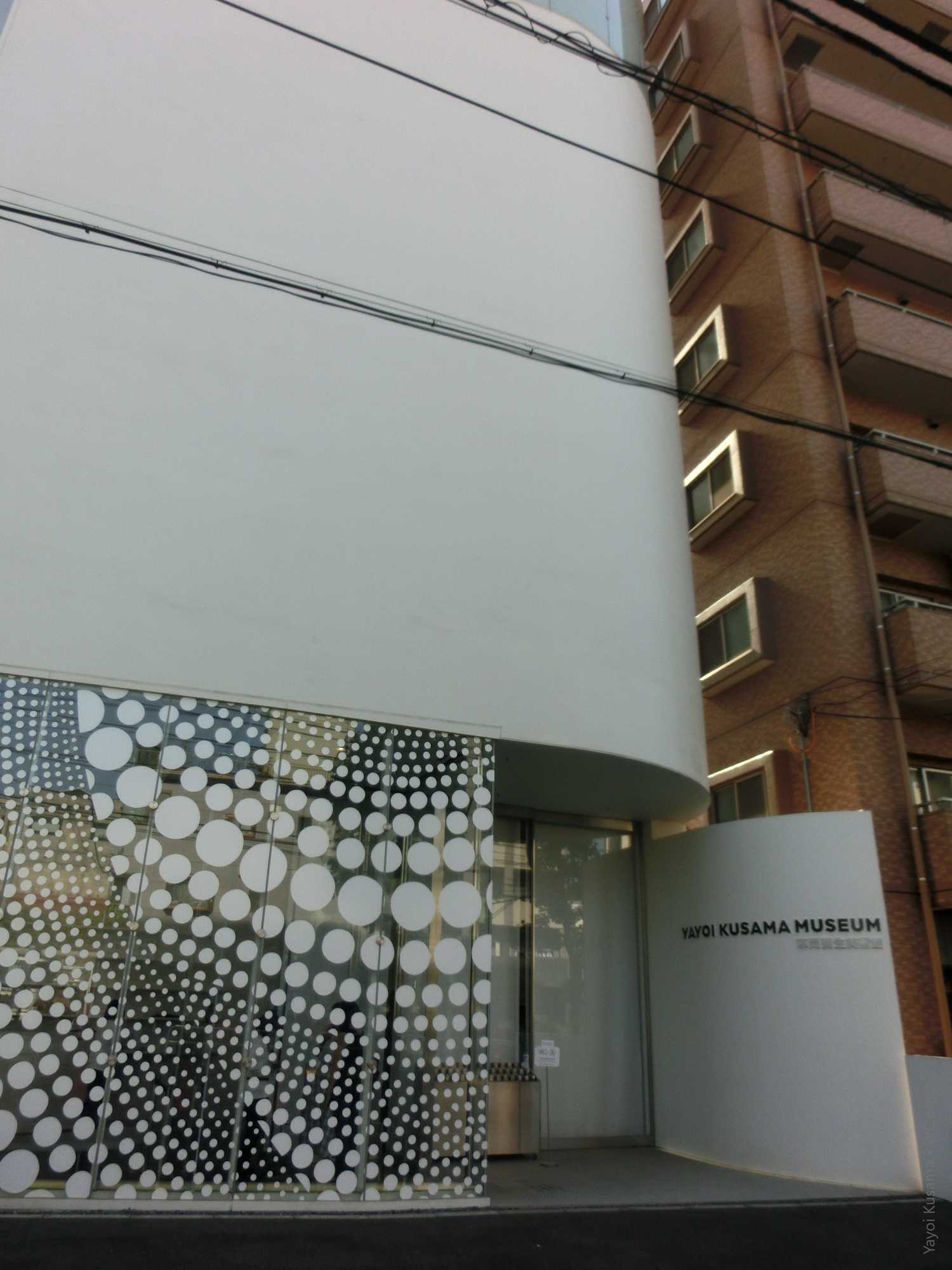Infinite Obliteration: Deciphering Yayoi Kusama’s Polka-Dotted Cosmos

Yayoi Kusama’s art is a cosmic dance of dots, color, and personal exploration. From the hypnotic repetition of polka dots to the immersive experiences of the Infinity Mirror Rooms, her works invite viewers to transcend the ordinary and enter realms where the boundaries between self and cosmos dissolve. Kusama’s art is not only visually arresting but serves as a powerful testament to the transformative potential of creativity and the infinite possibilities that emerge when one artist’s obsessions become a universal language of beauty and connection.

- Polka Dot Proliferation: Dots serve as a visual language transcending cultural boundaries.
- Infinity Mirror Rooms: Immersive experiences amplify the sense of infinite repetition.
- Psychedelic Color Palette: Bold and vibrant hues intensify the hypnotic quality of her works.
- Personal and Cosmic Obsessions: Dots reflect personal struggles and a quest for cosmic connection.
- Performance Art and Happenings: Kusama’s avant-garde spirit extends beyond traditional mediums.

Yayoi Kusama, the avant-garde maven of polka dots and immersive installations, has etched her indelible mark on the contemporary art landscape. Her career, spanning decades, is a kaleidoscopic journey through visual wonderlands where pattern and repetition become portals to infinite possibilities. In this exploration, we dissect the intricacies of Kusama’s art style, delving into the mesmerizing world where dots transcend mere decoration to become gateways to the sublime.
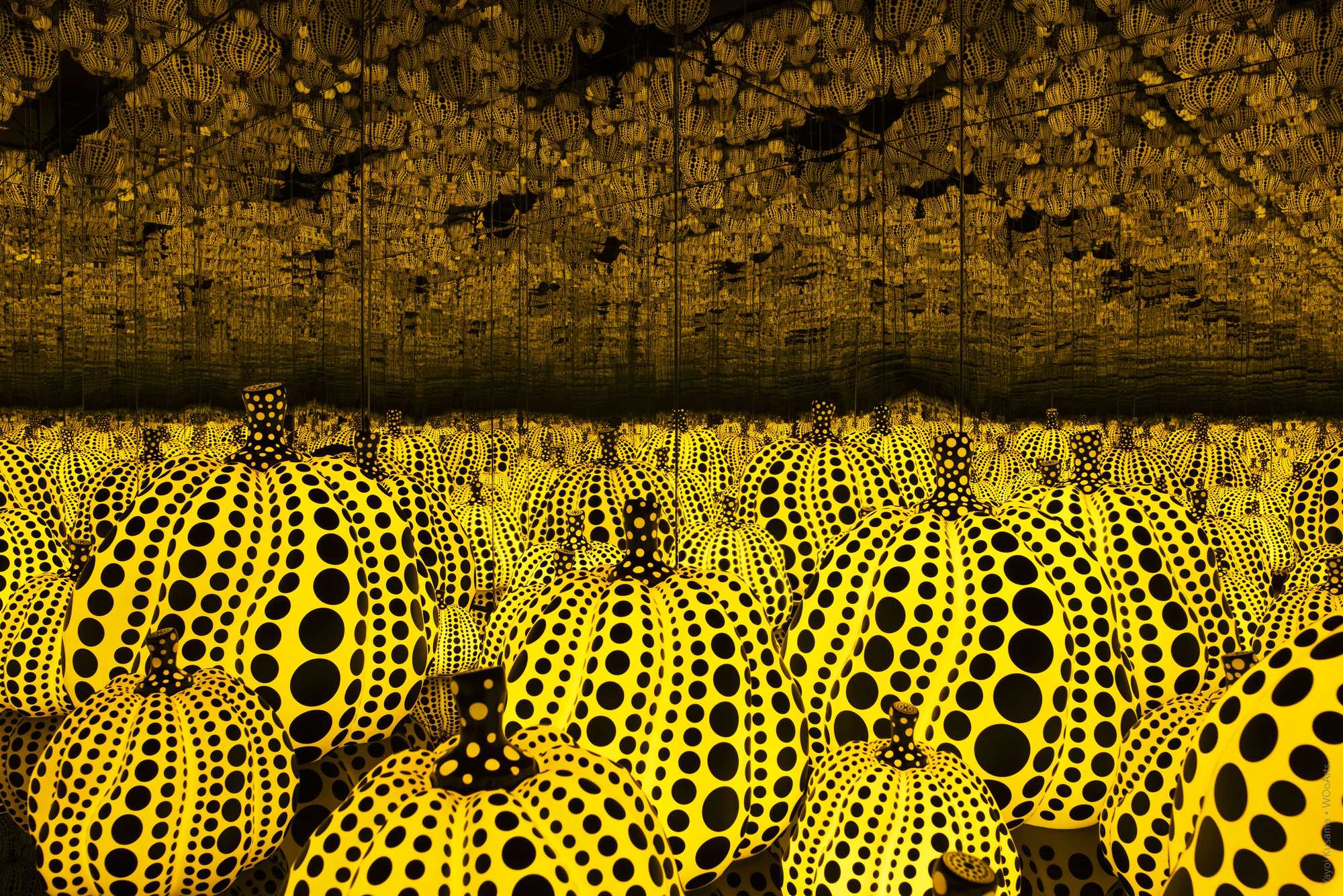
I. Polka Dot Proliferation: At the heart of Kusama’s art lies an obsessive fascination with polka dots. Her canvases, sculptures, and installations are adorned with an endless sea of dots, creating a visual language that transcends cultural boundaries. The repetition of dots serves as both a personal expression and a universal symbol of cosmic energy.
II. Infinity Mirror Rooms: Kusama’s iconic Infinity Mirror Rooms are immersive experiences that transport viewers into kaleidoscopic realms of endless reflections. The repetition of dots within these mirrored spaces amplifies the sense of infinity, creating a mesmerizing interplay between the observer and the artwork.
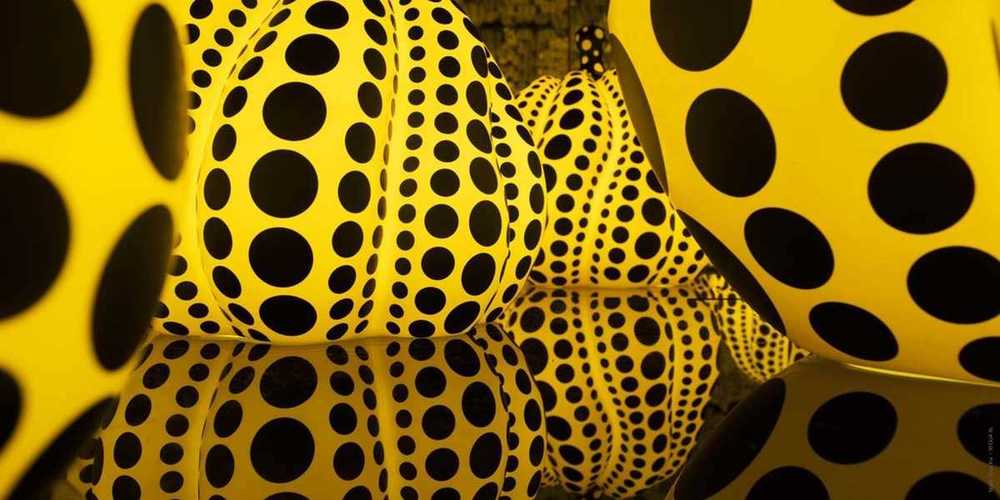
III. Psychedelic Color Palette: Kusama’s use of color is both bold and psychedelic. Vibrant hues, often juxtaposed against stark white backgrounds, intensify the impact of her repetitive patterns. The artist’s mastery of color contributes to the hypnotic and hallucinogenic quality of her works.
IV. Personal and Cosmic Obsessions: Kusama’s dots are not mere design elements but manifestations of personal and cosmic obsessions. They reflect her struggles with mental health and a lifelong quest to obliterate the boundaries between self and the universe. Through her art, Kusama transforms personal struggles into universally resonant experiences.
V. Performance Art and Happenings: Kusama’s avant-garde spirit extends beyond traditional mediums. Her involvement in performance art and happenings during the 1960s, including the provocative “Narcissus Garden,” demonstrates a commitment to breaking artistic norms and engaging with audiences in unconventional ways.
Yayoi Kusama: Queen of Infinity, Polka-Dot Prophetess
Yayoi Kusama, the Japanese artist extraordinaire, is more than just polka dots and pumpkins. Her vibrant, immersive installations transport us into kaleidoscopic worlds of infinity, obliterating boundaries and challenging perceptions. Let’s delve into the captivating cosmos of Kusama’s art, exploring the key takeaways that define her singular style.
Yayoi Kusama is more than just a polka-dot phenomenon; she’s a visionary artist who has expanded the boundaries of art and perception. Her immersive installations offer portals into infinity, inviting us to confront our own vulnerabilities, celebrate the power of repetition, and revel in the endless possibilities of creativity. So, step into a Kusama cosmos, lose yourself in the hypnotic dance of her dots, and let your imagination soar towards the realm of the infinite.
1. Infinity Obsession: Repetitive patterns, particularly her iconic polka dots, are Kusama’s signature. They stretch across canvases, engulf mirrors, and spill into infinity rooms, creating a sense of dizzying disorientation and endless possibility.
- Aftermath of Obliteration of Eternity (2009): This vast mirrored room, dotted with hundreds of red spheres, plunges viewers into a mesmerizing abyss. The endless reflections distort reality, inviting introspection and a surrender to the hypnotic rhythm of the polka dots.
2. From Trauma to Triumph: Kusama’s art is deeply personal, often drawing inspiration from her struggles with mental illness and hallucinations. Yet, she transforms these vulnerabilities into vibrant expressions of resilience and hope, proving that art can be a powerful tool for healing and transformation.
- My Eternal Soul (2019): This expansive collection at the Hirshhorn Museum in Washington D.C. showcased Kusama’s artistic journey, from her early monochrome works to her later vibrant installations. The exhibition revealed the raw emotions and profound beauty woven into her artistic tapestry.
3. Championing Psychedelia: Kusama’s art flourished during the 1960s counterculture movement, finding kinship with the psychedelic sensibilities of the era. Her immersive installations, with their distorted spaces and pulsating patterns, mirrored the mind-bending experiences sought by many during that time.
- Narcissus Garden (1966): This installation, featuring hundreds of mirrored silver spheres scattered across a lawn, blurred the lines between reality and illusion, inviting viewers to participate in a trippy, self-reflective experience.
4. Beyond the Studio: Kusama’s artistic reach extends far beyond the confines of traditional galleries. She has designed fashion lines, created public installations, and even collaborated with Louis Vuitton, proving that her polka-dotted world can infiltrate and brighten any corner of our lives.
- Kusama x Louis Vuitton (2012): This high-profile collaboration brought Kusama’s signature dots and pumpkins to the world of luxury fashion, making her art accessible to a wider audience and further blurring the lines between high art and popular culture.
Takeaways:
- Infinity Unbound: Kusama’s art invites us to lose ourselves in mesmerizing patterns and endless reflections, questioning the boundaries of reality and perception.
- Vulnerability as Strength: She transforms personal struggles into vibrant expressions of hope and resilience, proving that art can be a powerful tool for healing and transformation.
- Psychedelic Pioneer: Kusama’s immersive installations capture the spirit of the 1960s counterculture, offering trippy journeys into distorted spaces and altered realities.
- Art for All: From galleries to fashion, Kusama’s polka-dotted world extends beyond the traditional art space, democratizing art and bringing joy to everyday life.
Yayoi Kusama is a Japanese artist who is known for her extensive use of polka dots and for her infinity installations. She employed painting, sculpture, performance art, and installations in a variety of styles, including Pop art and Minimalism12. She used her hallucinations and personal obsessions as fodder for prolific artistic output in various disciplines2. She also explored the themes of self-reflection, feminism, obsession, sex, creation, and destruction in her works3.
Some of the most famous artworks of Yayoi Kusama are:
Infinity Net paintings: These consisted of thousands of tiny marks obsessively repeated across large canvases without regard for the edges of the canvas, as if they continued into infinity12. These paintings anticipated the Minimalist movement and created an almost hypnotic sensation for both the viewer and the artist2.
Accumulation sculptures: These were objects, such as an armchair or a boat, covered with soft phallic sculptures made from white fabric2. These sculptures expressed Kusama’s sexual anxiety and her desire to escape from reality2.
Infinity Mirrored Rooms: These were installations that used mirrors, lights, and polka-dotted objects to create the illusion of infinite space and endless repetition14. These rooms reflected Kusama’s fascination with the concept of infinity and her attempt to immerse herself and the viewers in her vision4.
Pumpkins: These were sculptures and paintings of pumpkins, often decorated with polka dots, that represented Kusama’s childhood memories and her connection to nature23. These works also symbolized her sense of humor and joy in life3.
Some of the takeaways from Kusama’s art style are:
She used simple forms and motifs, such as dots and nets, to create complex and captivating visual effects.
She expressed her personal struggles and emotions through her art, making it relatable and cathartic for many viewers.
She challenged the boundaries of art and society, experimenting with different media and genres, and engaging in political and social activism.
She demonstrated the healing power of art and the resilience of the human spirit, overcoming mental illness and adversity to become one of the most influential and celebrated artists of our time.
Yayoi Kusama
Born in Nagano Prefecture.
Avant-garde sculptor, painter and novelist.
Started to paint using polka dots and nets as motifs at around age ten ,and created fantastic paintings in watercolors, pastels and oils.
Went to the United States in 1957. Showed large paintings, soft sculptures, and environmental sculptures using mirrors and electric lights. In the latter 1960s, staged many happenings such as body painting festivals, fashion shows and anti-war demonstrations. Launched media-related activities such as film production and newspaper publication. In 1968, the film “Kusama’s Self-Obliteration”which Kusama produced and starred in won a prize at the Fourth International Experimental Film Competition in Belgium and the Second Maryland Film Festival and the second prize at the Ann Arbor Film Festival. Held exhibitions and staged happenings also in various countries in Europe.
Returned to Japan in 1973. While continuing to produce and show art works, Kusama issued a number of novels and anthologies. In 1983, the novel “The Hustlers Grotto of Christopher Street” won the Tenth Literary Award for New Writers from the monthly magazine Yasei Jidai.
In 1986, held solo exhibitions at the Musee Municipal, Dole and the Musee des Beaux-Arts de Calais, France, in 1989, solo exhibitions at the Center for International Contemporary Arts, New York and the Museum of Modern Art, Oxford, England. In 1993, participated in the 45th Venice Biennale.
Began to create open-air sculptures in 1994. Produced open-air pieces for the Fukuoka Kenko Center, the Fukuoka Municipal Museum of Art, the Bunka-mura on Benesse Island of Naoshima, Kirishima Open-Air Museum and Matsumoto City Museum of Art, , in front of Matsudai Station, Niigata,TGV’s Lille-Europe Station in France, Beverly Gardens Park, Beverly hills, Pyeonghwa Park,
Anyang and a mural for the hallway at subway station in Lisbon.
Began to show works mainly at galleries in New York in 1996. A solo show held in New York in the same year won the Best Gallery Show in 1995/96 and the Best Gallery Show in 1996/97 from the International Association of Art Critics in 1996.
From1998 to 1999, a major retrospective of Kusama’s works which opened at the Los Angeles County Museum of Art traveled to the Museum of Modern Art, New York, the Walker Art Center and the Museum of Contemporary Art, Tokyo.
In 2000, Kusama won The Education Minister’s Art Encouragement Prize and Foreign-Minister’s Commendations. Her solo exhibition that started at Le Consortium in France in the same year traveled to Maison de la culture du Japon, Paris, KUNSTHALLEN BRANDTS ÆDEFABRIK, Denmark, Les Abattoirs, Toulouse, KUNSTHALLE Wien, Art Sonje Center, Seoul.
Received the Asahi Prize in 2001, the Medal with Dark Navy Blue Ribbon in 2002, the French Ordre des Arts et des Lettres (Officier), and the Nagano Governor Prize (for the contribution in encouragement of art and culture) in 2003
In 2004, Her solo exhibition “KUSAMATRIX” started at Mori Museum in Tokyo. This exhibition drew visitors totaling 520,000 people. In the same year, another solo exhibition started at The National Museum of Modern Art, Tokyo In 2005, it traveled to The National Museum of Modern Art, Kyoto, Hiroshima City Museum of Contemporary Art, Contemporary Art Museum, Kumamoto,
Matsumoto City Museum of Art.
Received the 2006 National Lifetime Achievement Awards, the Order of the Rising Sun, Gold Rays with Losette and The Praemium Imperiale -Painting- in 2006.
In 2008, Documentary film : “Yayoi Kusama, I adore myself” released in Japan and also screened at international film festival and museum. Exhibition tour started at Museum Boijmans Van Beuningen in Rotterdam, traveled to Museum of Contemporary Art Sydney in Australia in 2009, City Gallery Wellington in New Zealand. Conferred the honorary citizen of Matsumoto city.
Solo exhibition at Gagosian Gallery NY and LA, Victora Miro Gallery in London and Padiglione d’Arte Contemporanea in Milan. Honored as Person of Cultural Merits in Japan 2009.
In 2010, solo exhibition and permanent outdoor sculpture at Towada Art Center in Japan.?Participation to Sydney Biennale and Aichi Triennale. Solo exhibition at Victoria Miro Gallery in London, fiac in Paris.
2011, solo exhibition at Gagosian gallery (Roma), Victoria Miro gallery (London). Europe and North America retrospective tour started at Museo
Nacional Centro De Arte Reina Sofia, Madrid traveling to Centre Pompidou
(Paris), TATE MODERN (London) and Whitney Museum (New York). Solo exhibition at Watari Art Museum (Tokyo). In September, participate in the 2011 Chengdu Biennale (China). Programmed solo exhibition at Queensland Art Gallery (Brisbane) in November.
2012, “Eternity of Eternal Eternity”, recent works solo national traveling show started at National Museum of Art, Osaka traveled to The Museum of Modern Art, Saitama, Matsumoto City Museum of Art, Nagano, Niigata City Art Museum. In the next year, it travel to Shizuoka Prefectural Museum of Art, Oita Art Museum and Museum of Art, Koch. Solo exhibition at Victoria Miro gallery (London). Shinjuku Honorary Citizen Award. The American Academy Of Arts and Letters Foreign Honorary Membership. Collaborated with Louis Vuitton creative director Marc Jacobs on collaborative collection “LOUIS VUITTON × YAYOI KUSAMA Collection”.
2013, “Yayoi Kusama. Obsesión infinita [Infinite Obsession]”, South America retrospective tour started at Malba – Fundacacion Constantini. It will travel to Centro Cultural Banco do Brasil, Rio de Janeiro, Centro Cultutal Banco do Brasil, Brasília, Instituto Tomie Ohtake, São Paulo and Mexico City. “KUSAMA YAYOI, A Dream I Dreamed”, recent works exhibition tour started at Daegu Art Museum, Korea. It will travel to Museum of Contemporary Art Shanghai, Seoul Arts Centre, Taipei Fine Arts Museum, National Gallery of Modern Art, New Delhi.
via: Yayoi Kusama website
